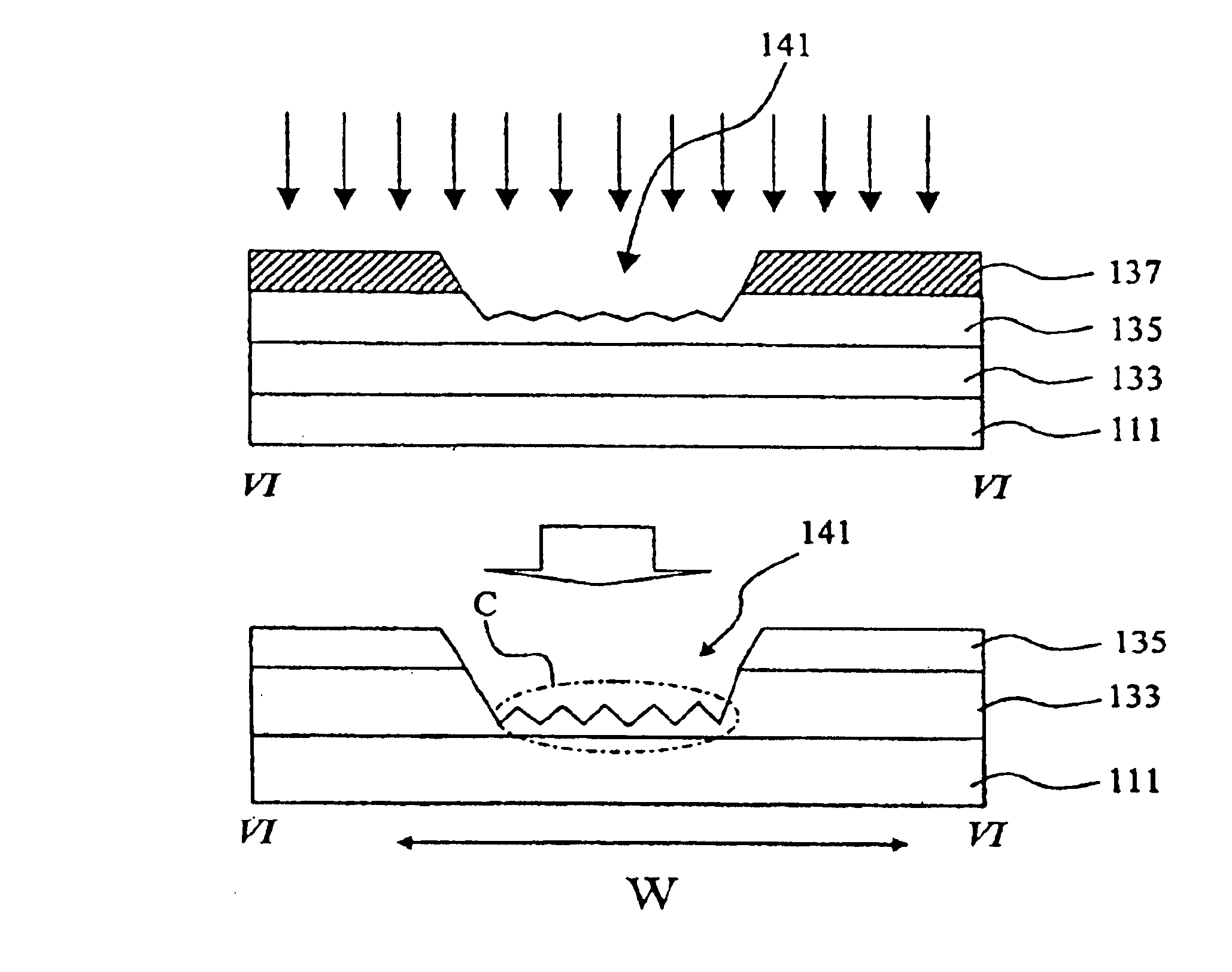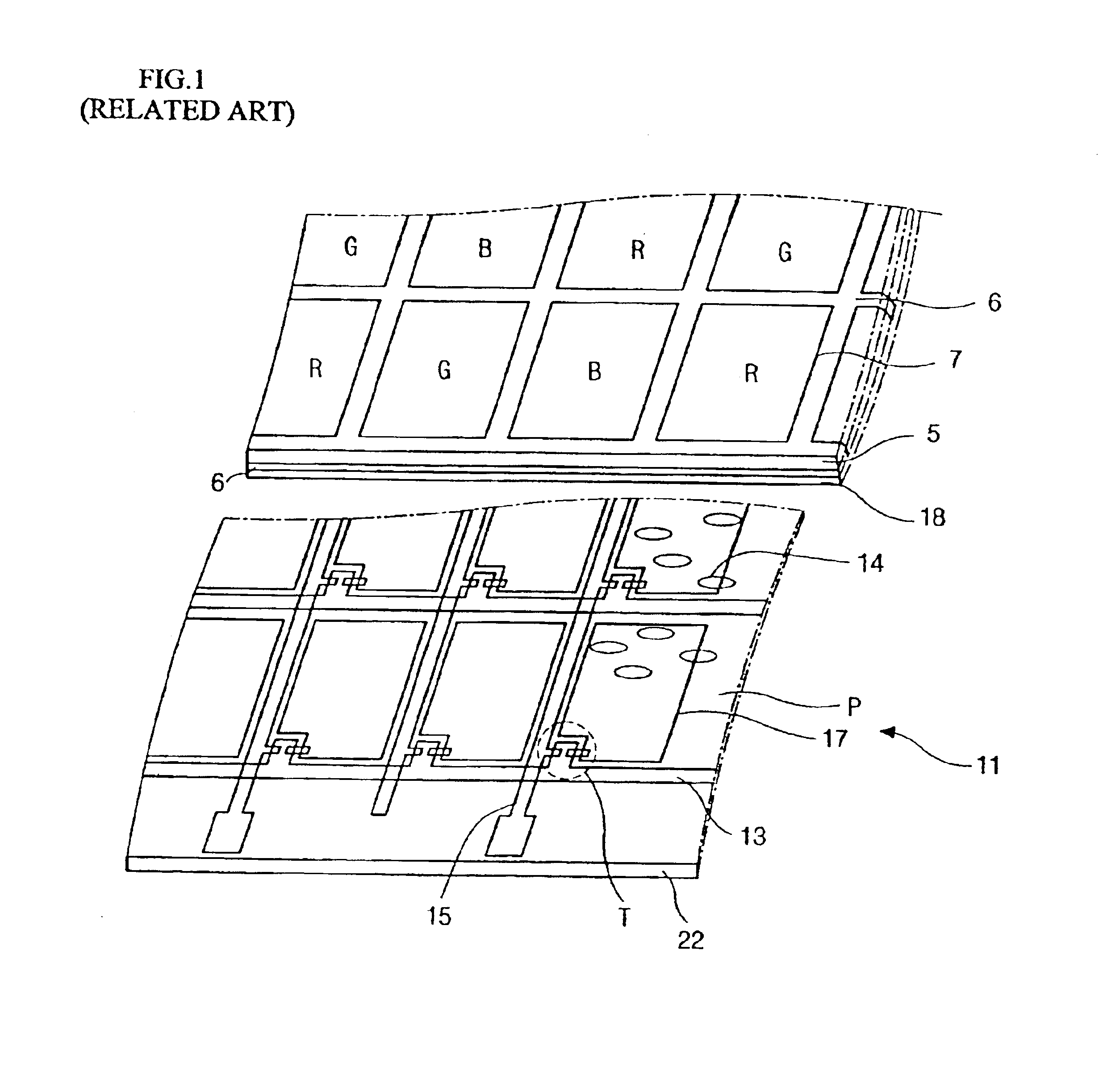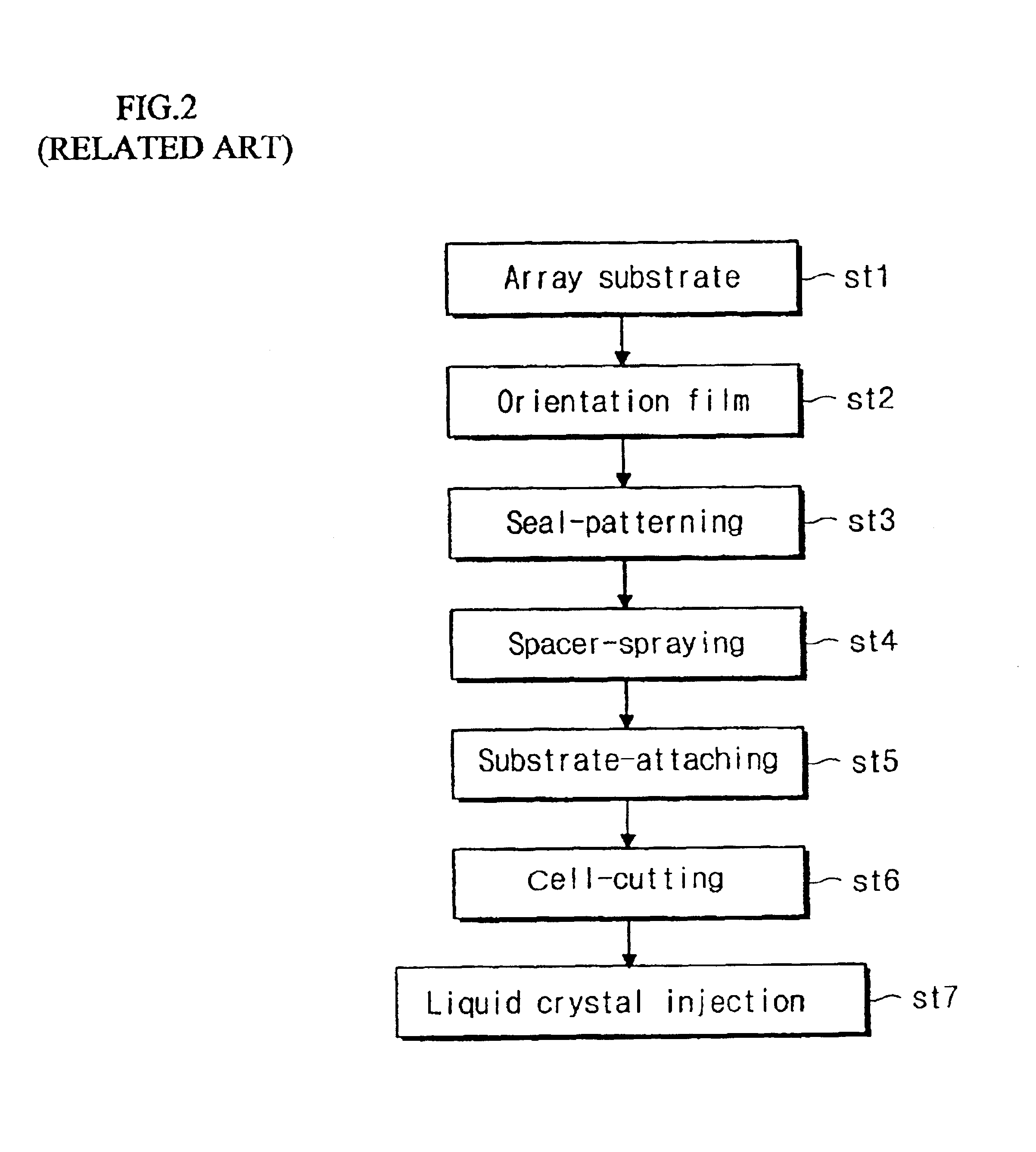Liquid crystal display device having improved seal pattern and method of fabricating the same
a liquid crystal display and seal pattern technology, applied in non-linear optics, instruments, optics, etc., can solve the problems of deteriorating resolution characteristics of lcd devices, light may leak from the panel, and liquid crystal cells cannot adequately perform their functions, so as to achieve improved seal patterns
- Summary
- Abstract
- Description
- Claims
- Application Information
AI Technical Summary
Benefits of technology
Problems solved by technology
Method used
Image
Examples
first embodiment
[0059]FIGS. 6A to 6C are cross-sectional views taken along the line VI—VI of FIG. 4 illustrating fabricating processes for a seal pattern according to the present invention.
[0060]FIG. 6A illustrates a photoresist process for forming an etching hole in a seal pattern area of an array substrate. As shown in the drawing, a gate insulation layer 133 and a passivation layer 135 are stacked on a substrate 111. Here, the gate insulation layer 133 is formed of an inorganic material while the passivation layer 135 is made of an organic material. The seal pattern area for a seal pattern is determined in the edges of the stacked structure of the array substrate. In order to form an etching hole, a photoresist layer 137 is formed on the entire surface of the passivation layer 135. A light exposure process is then performed using a mask 139.
[0061]In this process, the mask 139 has a plurality of slits 140 corresponding to the seal pattern area such that the light “A” passing the slits 140 is diff...
second embodiment
[0069]FIGS. 7A to 7C are cross-sectional views taken along the line VI—VI of FIG. 4 illustrating fabricating processes for a seal pattern according to the present invention.
[0070]FIG. 7A illustrates a photoresist process for patterning a passivation layer and a gate insulation layer in the seal pattern area of the array substrate. As shown in the drawing, the gate insulation layer 233 and the passivation layer 235 are stacked on a substrate 221. Here, the gate insulation layer 233 is an inorganic material and the passivation layer 235 is an organic material. A photoresist layer 237 is formed on the passivation layer 235.
[0071]After performing a light exposure process using a mask (not shown), some portions of the photoresist layer 237 are stripped off in order to form projecting portions “f1” and indented portions “f2”. The indented portions “f2” expose the surface of the passivation layer 235. The patterned portion of the photoresist layer 237 is as wide as the width “W” of the sea...
third embodiment
[0077]In general, the array substrate includes a switching element, a gate, and data lines, which are formed thereon. The sequential configuration order for forming the gate and data lines depends on the TFT type, as described before. In a third embodiment, an inverted staggered type TFT is elected as an example. Thus, detailed explanation will be focused on the inverted staggered type TFT.
[0078]According to the inverted staggered type TFT, as shown in FIG. 5A, the gate lines are initially formed on the substrate. The insulation layer is then formed on the substrate to cover the gate lines. Thereafter, the data lines are formed on the insulation layer. Thus, the data lines are insulated from the gate lines by the insulation layer. Moreover, the passivation layer is formed to cover the data lines.
[0079]FIGS. 8A to 8C and 9A to 9C are cross-sectional views taken along the line VI—VI of FIG. 4 illustrating fabricating processes for a seal pattern according to a third embodiment of the ...
PUM
| Property | Measurement | Unit |
|---|---|---|
| area | aaaaa | aaaaa |
| lattice | aaaaa | aaaaa |
| adhesion | aaaaa | aaaaa |
Abstract
Description
Claims
Application Information
 Login to View More
Login to View More - R&D
- Intellectual Property
- Life Sciences
- Materials
- Tech Scout
- Unparalleled Data Quality
- Higher Quality Content
- 60% Fewer Hallucinations
Browse by: Latest US Patents, China's latest patents, Technical Efficacy Thesaurus, Application Domain, Technology Topic, Popular Technical Reports.
© 2025 PatSnap. All rights reserved.Legal|Privacy policy|Modern Slavery Act Transparency Statement|Sitemap|About US| Contact US: help@patsnap.com



